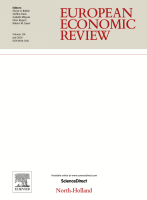
Unemployment insurance, the California program that supports workers who lose their jobs due to layoffs, has been dysfunctional during the last two recessions. It’s time to fix it.

Official labor market statistics for the United States are collected once a month and published with a three week delay. In normal times, this procedure results in timely and useful statistics. But these are not normal times.

We use traditional and non-traditional data to measure the collapse and partial recovery of the U.S. labor market from March to early July, contrast this downturn to previous recessions, and provide preliminary evidence on the effects of the policy response.

Technological advances raise productivity and growth, but are also likely to reshape labor markets. We examine the impact of automation on aggregate labor force participation rates and individuals’ attachment to the workforce in advanced economies.

There are the main specialties of crisis conditions in economy, which have to be taken into consideration while developing policy in enterprise’s staff sphere. Actuality and novelty of the problem are in extension of the existing crisis, while studying its consequences we just need to analyze and summarize them by encompassing both theory and practice.

This discussion paper focuses on longer-term trends affecting employment in more than 1,000 local and regional labor markets across Europe at a time when automation adoption is gathering pace.

Construction workforce shortage is a well-documented issue facing the built environment. Rapid rise in the number of projects, and the shortage of skilled workers are primary drivers of construction workforce shortages.

The research objective is to analyze the fulfillment of labor social security as a form of legal protection for workers in the formal and informal sectors as well as barriers and their solutions.
